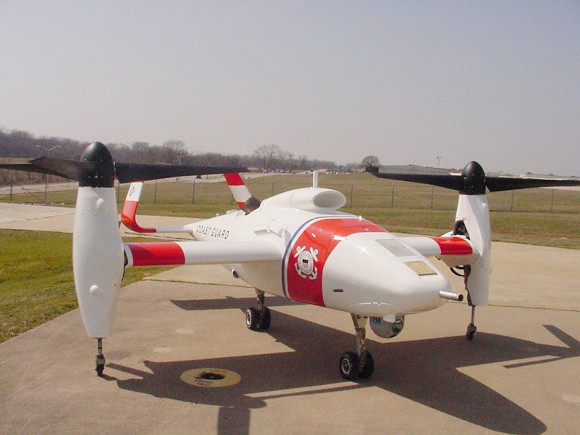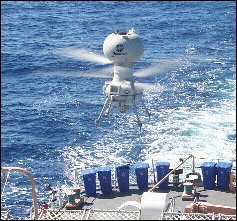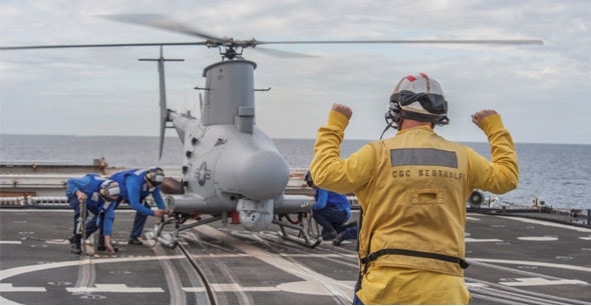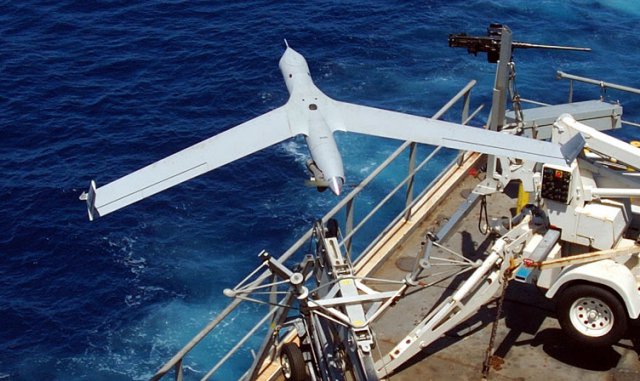The U. S. Coast Guard awarded a potential $117.2 million contract to Boeing’s Insitu subsidiary to provide contractor owned and operated small unmanned aircraft systems (sUAS) aboard its fleet of National Security Cutters (NSC).
Challenged with policing a vast six million square-mile maritime area to disrupt and deter the flow of illegal drugs and undocumented migrants the Coast Guard specified the need for a shipboard small UAS able to conduct surveillance, detection, classification and identification operations providing real-time imaging and communications relay to Coast Guard vessels. The ScanEagle was selected providing the NSC with a full-motion video (FMV) of the ocean surface and an unprecedented ability to detect targets of interest for further investigation and potential interdiction.
The Coast Guard began infrastructure installation aboard the first NSC in April 2018 and plans to outfit four NSCs per year until the fleet is complete in FY21.
Background:
Upgraded fixed-wing maritime patrol and shipboard- helicopter operations in the Coast Guard proved to be highly successful as force multipliers. This coupled with the notable development of UASs for cost-effective surveillance purposes led the United States Coast Guard Research and Development Center (R&DC) to conduct multiple analyses during the past seventeen years to explore the potential benefits of integrating UAS technology into Coast Guard operations.
The first UAS to launch and recover from a Coast Guard vessel took place aboard the USCG Cutter Thetis during the period 21-22 November 1999. In February/March 2001, the R&DC deployed the Condor UAS from the USCG Cutter Harriet Lane. In August 2002, the R&DC completed a four-day, shore-based field test in Galveston, TX utilizing the Sentry HP small UAS.
In 2002, within the Integrated Deepwater System (IDS), a contract was awarded to Integrated Coast Guard Systems (ICGS)—a joint venture between Northrop Grumman and Lockheed Martin to implement the transformation of Coast Guard aviation. It encompassed the progressive upgrading of selected legacy assets and the introduction of new and more capable fixed-wing aircraft, helicopters, and unmanned aerial vehicles (UAVs). – later termed UAS by the Federal Aviation Administration.
 Bell Helicopter was awarded a contract to commence concept and preliminary design work on the HV-911 Eagle Eye vertical take-off and landings for shipboard operations. Prototypes were developed and built for testing in 2005. The Coast Guard had planned to purchase 69 Eagle Eyes if the aircraft met requirements. The Coast Guard canceled the HV-911 contract in March 2008 because it did not meet performance requirements and required further technical development. To avoid future development costs the Coast Guard focused on technologically mature systems that were already in use by the Department of Defense and or other Federal Agencies.
Bell Helicopter was awarded a contract to commence concept and preliminary design work on the HV-911 Eagle Eye vertical take-off and landings for shipboard operations. Prototypes were developed and built for testing in 2005. The Coast Guard had planned to purchase 69 Eagle Eyes if the aircraft met requirements. The Coast Guard canceled the HV-911 contract in March 2008 because it did not meet performance requirements and required further technical development. To avoid future development costs the Coast Guard focused on technologically mature systems that were already in use by the Department of Defense and or other Federal Agencies.
Given this new direction, an evaluation of available tactical vertical-lift UAS vehicles for operation on the National Security Cutter (NSC) was begun. The NSC is an advanced capability vessel designed to employ both manned and unmanned aircraft to cover a surveillance range of 12,000 nautical miles. Several UASs were considered such as the Boeing A-160, the Aurora Excalibur and the Northrop Grumman MQ-8.Fire Scout. The Coast Guard focused on the Fire Scout, a rotary –wing UAS .that was being developed, tested and evaluated by the U.S. Navy.
The MQ8 Fires Scout
The Coast Guard collaborated with the Naval Air Systems Command to demonstrate the Fire Scout unmanned aircraft system aboard Coast Guard Cutter Bertholf in December of 2014. The 10-day demonstration met some of the Coast Guard’s requirements for shipboard operations, and surveillance. However, a significant flight control malfunction took place ending the demonstration and showed that the system still required further development for shipboard operations. Mounting developmental, maintenance, engineering, procurement cost, and supply problems escalated and as a result, the Fire Scout did not fit the Coast Guards strategy to procure non-developmental systems. The Coast Guard discontinued its efforts with the Fire Scout and instead focused on the small UAS systems .that showed much more promise due to their simplicity, low manpower requirements, high endurance, and cost-effectiveness.
Several UAS were evaluated. The ScanEagle was chosen for evaluation based upon years of reliable maritime service in the US and foreign navies. A Series of three evaluations were conducted.
The initial evaluation took place on the Coast Guard Cutter Stratton in 2012 and focused on shipboard integration, basic system operation, and impacts on cutter and crew. Among other benefits, the evaluation illustrated the minimal operations and maintenance support that ScanEagle imposed on the ship’s crew as opposed to the Fire Scout or manned helicopters. In addition, the ScanEagle demonstrated it could provide endurance approaching 24 hours per launch.. Neither the Fire Scout nor a manned helicopter can duplicate this.
The second phase of the Scan Eagle evaluation took place aboard the Coast Guard Cutter Bertholf in 2013. This was intended to expand on the basic principles learned during phase one and deploy the system along with the manned helicopter in an actual operational environment. This was significant as it was the first time the ship deployed with all required aviation capabilities, as originally envisioned and designed. During the two-week deployment, the UAS demonstration team operated a ScanEagle UAS for more than 90 hours of flight time and aided in the interdiction of nearly 600 kilograms of cocaine – the first Coast Guard interdiction conducted with the support of an embarked UAS asset. During this mission, the ScanEagle was deployed by the Bertholf to provide real-time surveillance and detection of a suspected go-fast vessel. The UAS located the target vessel and maintained constant on-scene surveillance until the cutters MH-65D helicopter and Over the Horizon (OTH) cutter boats arrived to interdict and apprehend the vessel’s crew.
The third phase took place at Wallops Island, VA. in 2014. It evaluated surface search payloads that would enable the UAS to execute required surveillance and detection requirements.
Following the successful ScanEagle evaluations, the Coast Guard leveraged an existing Naval Air Systems Command contract to deploy the system, on a regular basis, aboard the Coast Guard Cutter Stratton. The Cutter crew, ScanEagle crew and representatives from the Coast Guard UAS program completed the testing of the power, communications and the launch and recovery systems on January 2, 2017, ensuring that all components functioned properly and were ready for several months at sea.
The full system consists of the aircraft and its sensor payloads, launch and recovery devices, a ground control station, and a forward and aft directional antennae, The Scan Eagle is 8.2-foot-long with a 16-foot wingspan. It is launched by a pneumatic-mechanical catapult and recovered arresting line wire. ScanEagle is designed to remain in the air for more than 24 hours.
With the system installed and fully operational the Stratton departed Alameda on a six-week deployment in the Eastern Pacific Ocean. The embarked ScanEagle flew 39 sorties for a total of 279 hours, including one operation where the aircraft provided persistent surveillance for 22.7 flight hours in a 24-hour period. ScanEagle was equipped with multiple sensors including electro-optic, and infrared cameras that delivered high-resolution full –motion videos to the Stratton crew and decision makers, enabling them to better execute real-time actionable intelligence. The information ScanEagle provided assisted with prosecution efforts by the U.S. Department of Justice. By the end of the deployment, the Scan Eagle had directly assisted the Stratton crew with conducting four interdictions, seizing more than 1,676 kilograms of illicit contraband valued at $55 million and apprehending ten suspected drug traffickers.
The Scan Eagle was selected as the Coast Guards NSCs small UAS primarily due to the system’s ability to support the cutter’s requirements and its historical reliability for shipboard operations.
Note:
Today’s events are history only when aged by time. However in this narrative the Coast Guard UAS program, due to its potential, has been presented to include both the accomplished and future possibilities.




